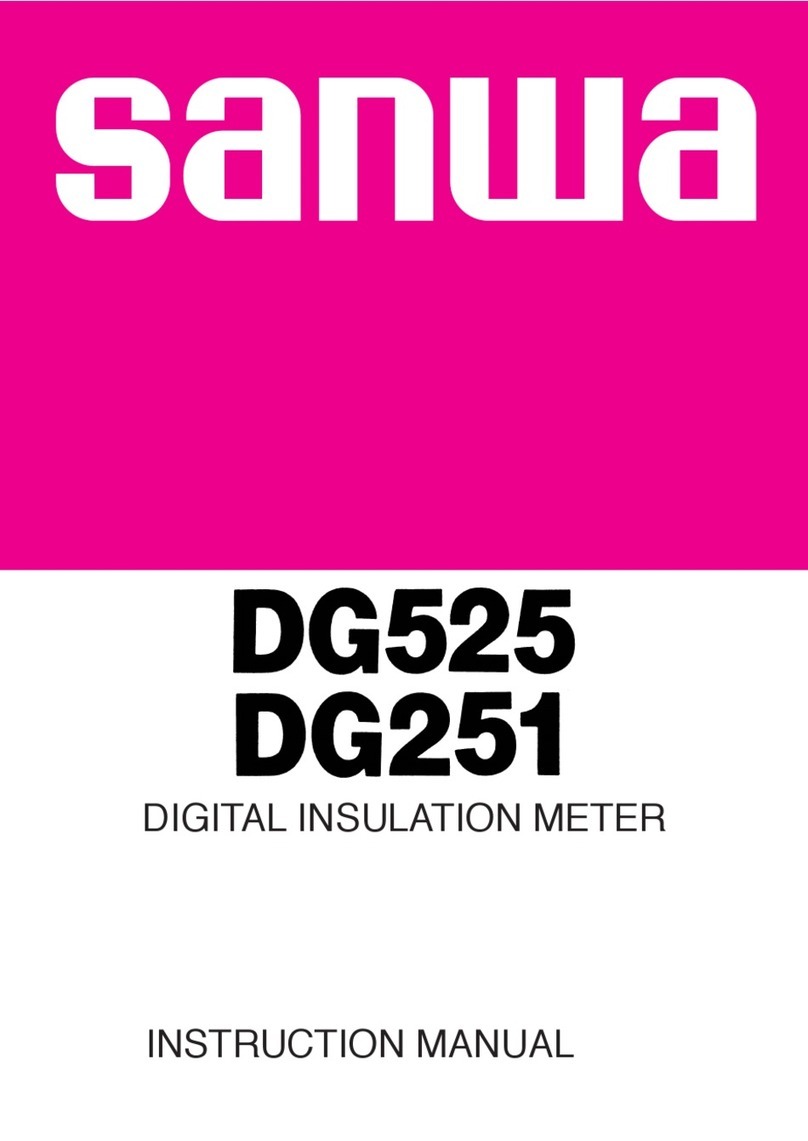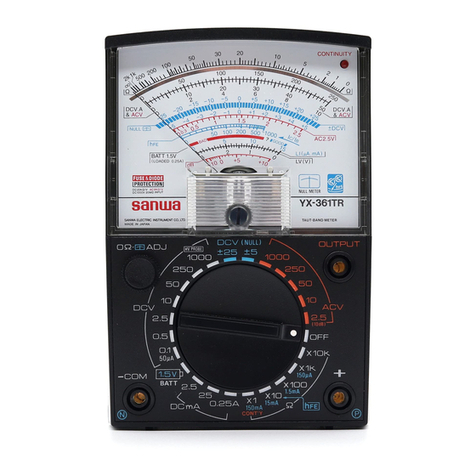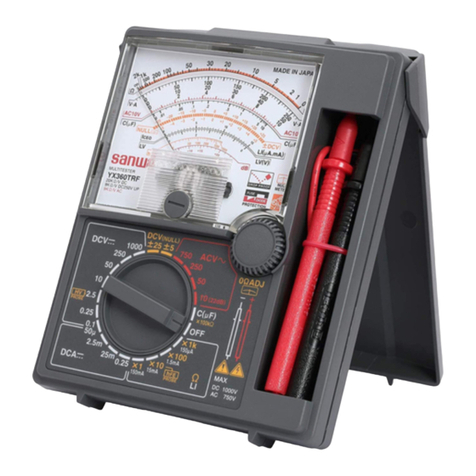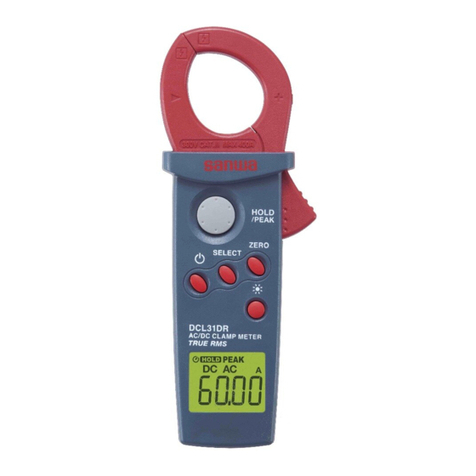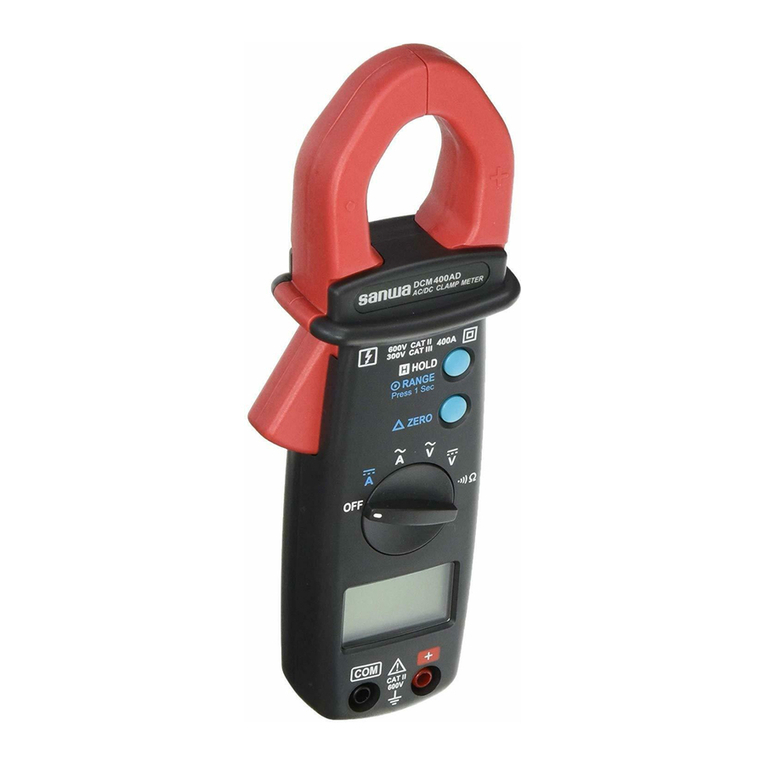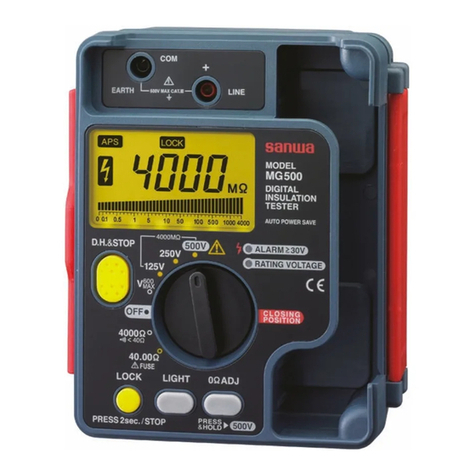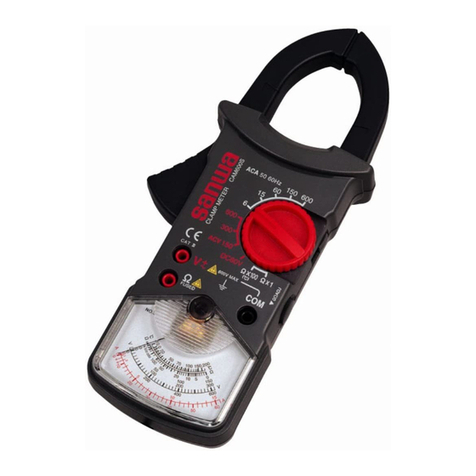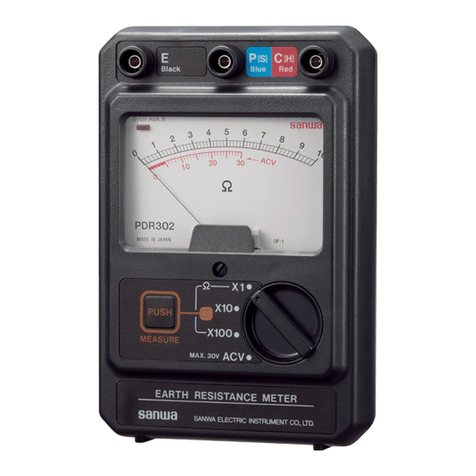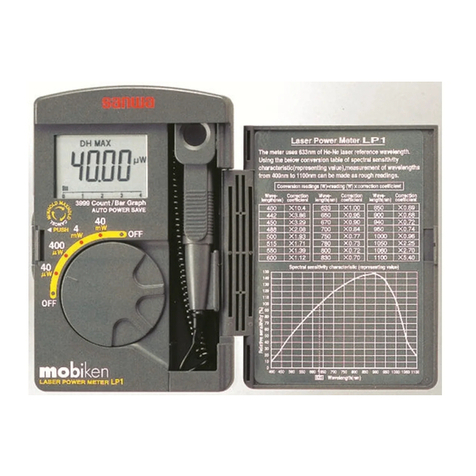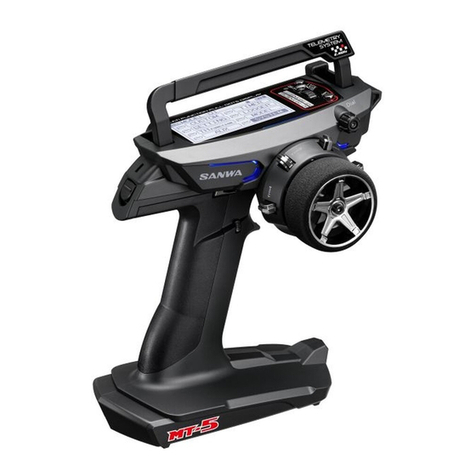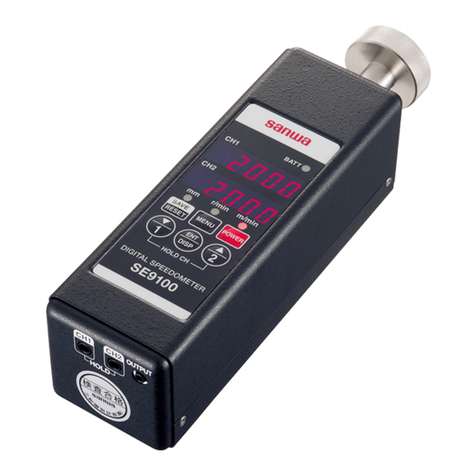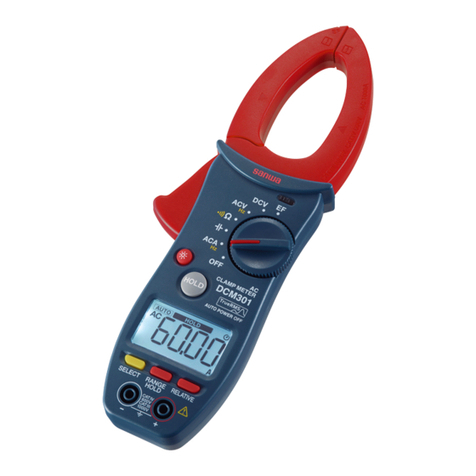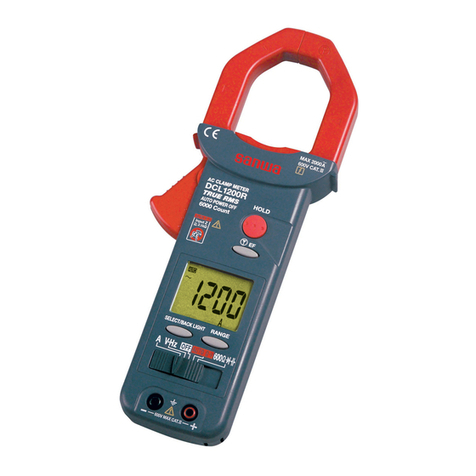
Table of Contents
【1】
SAFETY PRECAUTIONS – Before use, read the following safety precautions.–
1-1 Explanation of Warning Symbols ……………………… 001
1-2 Warning Messages for Safe Use ……………………… 001
1-3 Overload Protection……………………………………… 003
【2】APPLICATIONS AND FEATURES
2-1 Applications ……………………………………………… 004
2-2 Features …………………………………………………… 004
【3】NAMES OF COMPONENT UNITS
3-1 Main unit and test leads ………………………………… 005
3-2 Display …………………………………………………… 006
【4】DESCRIPTION OF FUNCTIONS
4-1 Power Switch & Function Switch ……………………… 007
4-2 Auto power save ………………………………………… 007
4-3 Low battery indication ………………………………… 007
4-4
Selecting the measurement function: button
… 007
4-5
BACK LIGHT function : ( ) button
………… 007
4-6 Range Hold: button …………………………… 008
4-7 Measuring the relative value: button………… 008
4-8 Data Hold: button ………………………………… 008
4-9 Peak Hold: ( ) button ……………………… 008
4-10 EF (Electric Field) sensing: button ……………… 0010
4-11 Muting the buzzer………………………………………… 010
4-12 AC Detection Method …………………………………… 010
4-13 Crest Factor ……………………………………………… 010
【5】MEASURING PROCEDURE
5-1 Start-up Inspection ……………………………………… 011
5-2
"VUPMPXJNQFEBODFWPMUBHFSFTJTUBODFEFUFDUJOHNFBTVSFNFOU"VUPût7
… 011
5-3
7'%7BSJBCMF'SFRVFODZ%SJWF"$WPMUBHFNFBTVSFNFOU
…014
5-4 "$WPMUBHFNFBTVSFNFOU"$7 …………………… 015
5-5
%$WPMUBHF%$WPMUBHF"$WPMUBHFNFBTVSFNFOU%$7%$7"$7
… 016
5-6
Current (A) measurements (ACA/DCA/DCA+ACA)
…… 017
5-7
Resistance measurement / circuit continuity check ( / )
… 019
5-8
Capacitance measurement / Diode test ( / )
…………… 020
5-9 EF (Electric Field ) sensing ……………………………… 021
【6】MAINTENANCE
6-1 Maintenance and Inspection …………………………… 022
6-2 Calibration and Inspection ……………………………… 022
6-3 Storage …………………………………………………… 022
6-4 Battery Replacement …………………………………… 023
【7】AFTER-SALE SERVICE
7-1 Warranty and Provision ………………………………… 024
7-2 Repair ……………………………………………………… 024
7-3 SANWA web site ………………………………………… 025
【8】SPECIFICATIONS
8-1 General Specifications ………………………………… 026
8-2 Measuring ranges and accuracies …………………… 027












